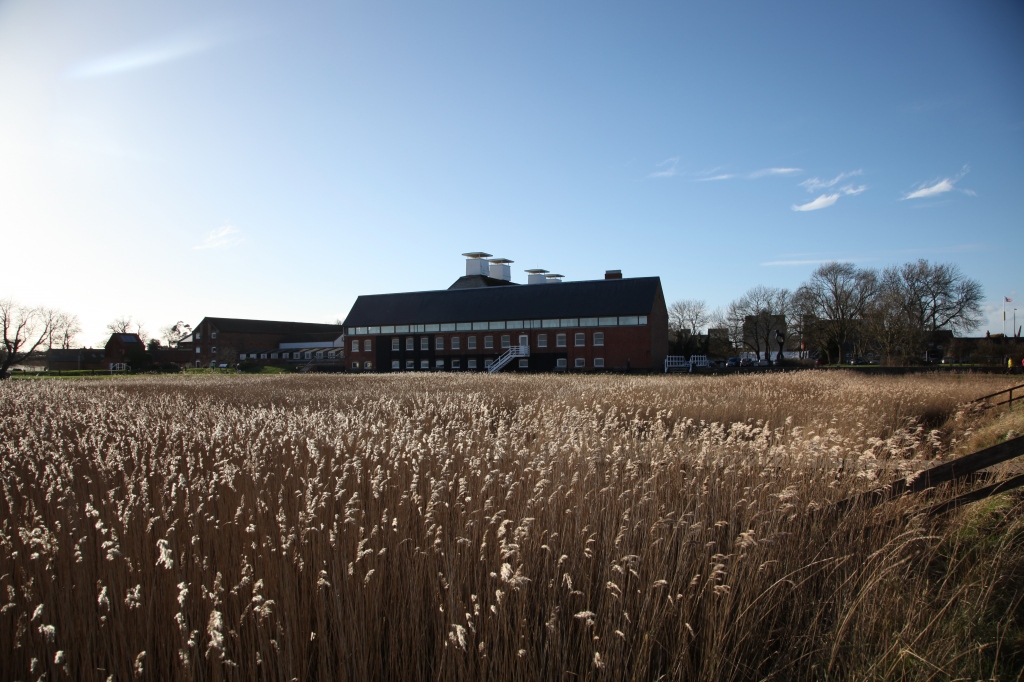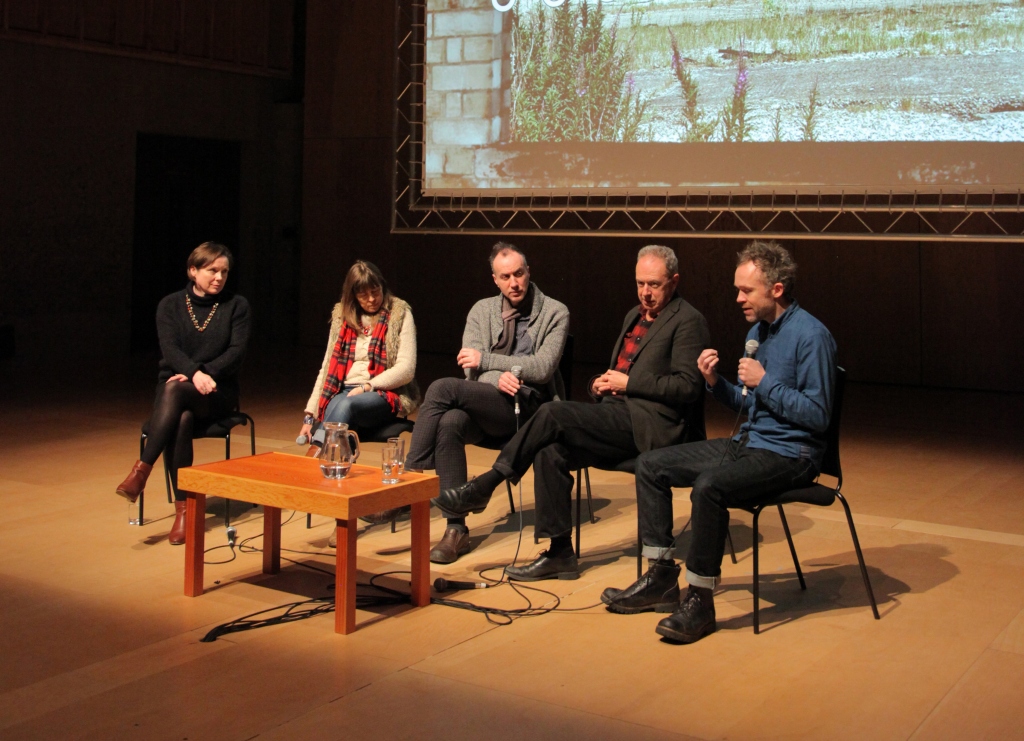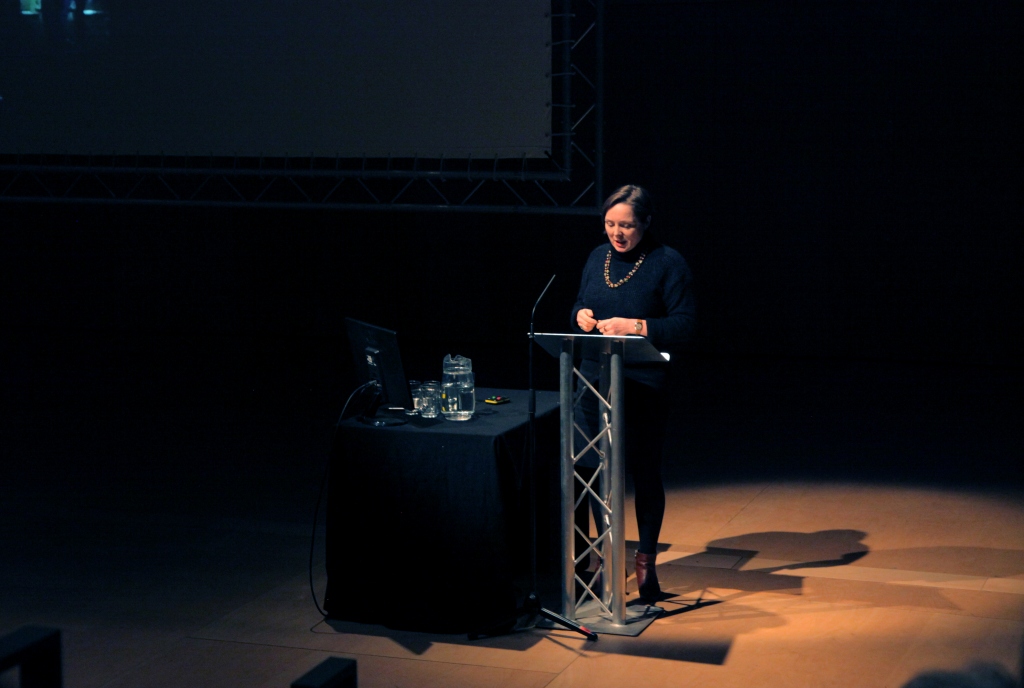Stay Where You Are Launches at Place: 1 & 2 February 2014
Events, Past events / February 19, 2014The first instalments of the Stay Where You Are commissions were presented at Place Festival in Suffolk on the first weekend of February. Themed around ‘Occupation’, a word that conjures the recent anti-capitalist encampments and the notion of peaceful resistance, but also suggests the wider significance of staying in one place and reflecting on the nature of home, the weekend saw filmmakers, artists and essayists meditating on the pleasures, and pressures, of the local. Whether as a vulnerable concept in need of defence against the powers-that-be, or as a place of comfort and security, there was a sense that the notion of occupation, and the manifold activities involved therein, was fundamental to understanding of our relation to the landscape.
The first Stay Where You Are commission to be presented was Jem Finer’s ‘51º 30’ 44” N, 0º 0’ 38″ E’. The apparently cryptic title is in fact the precise coordinates of his studio in Trinity Buoy Wharf, where he will be producing a series of short films and audio works throughout the year. With its sparse, somnolent soundtrack rich with the slushing and gargling of the rivers Lea and Thames, which meet together directly outside Jem’s studio, as well as floating passages of music, the film charted a nocturnal landscape where nothing much is happening yet the air is thick with a brooding, plaintive atmosphere. The concept of ‘immersion’ in our surroundings is often invoked as an often clichéd response to work that situates the viewer in particular places, but in this case the word was apt. The studio lights turned off. The footage was sparse, minimal, understated – sometimes all we saw was a blank screen. Staying where you are, the work suggests, can be an almost baptismal process: a plunging into the unknown.
Philip Hoare, whose talk immediately followed Jem’s film, expanded on the oceanic theme in his presentation ‘The Sea Inside Us All.’ Many of the talks at Place touched on the notion of property – of ‘occupation’ as a form of possession, and the private ownership of landscape. The seas, Philip argued, are equally contested territories, both as resources and as places to be possessed. The focus of his talk, however, was the cultural significance of the sea, a kind of myth-making presence whose unfathomable mysteries reflects our own interior oceans of memory. The inspirations one can draw from an element as ubiquitous, protean and as free-flowing as water chimed with comments made by Sukhdev Sandhu in his earlier keynote talk. Responding to the notion of ‘staying put’ and ‘knowing your place’, he argued for a kind of fluidity of identity in reaction against the (sometimes oppressive) command to be fixed in one particular place.
But physical restrictions do not necessarily translate into imaginative ones. In ‘Hearth: A Thesaurus of Home’, the second Stay Where You Are commission to be presented on Saturday, and intended as the first of several despatches from her rural Welsh home, Jay embraced the restricted parameters of the home to uncover the richly allusive qualities of our most intimate surroundings. Emphasising that places are both physically felt and culturally constructed, she unpacked the rich etymological meanings contained in both word and building. Home, she says, ‘is made in layers; a personal geology’. Reflecting on her essay during a roundtable discussion after her presentation, Jay, who is best known as a chronicler of the far-flung wilderness, revealed that she has long been fascinated by the notion of home: a landscape no less various than the exterior world, and which thrives on the conversational two-and-fro of self and surroundings. In fact, the weekend as a whole could almost have been built around ‘Home’, instead of ‘Occupation’. Many of the presentations orbited the notion, sometimes as a central concern, but often from positions of exile, melancholy and loss – as in the case of John Berger’s film Letters from Gaza. Inherent in ‘home’ are the notions of containment, safety and a sense of belonging, but in a time of forced austerity and a widespread housing shortage, having a home of any kind is an increasingly rare privilege.
While Shona Illingworth presented an ongoing project to map the amnesiac landscapes of the St Kilda archipelago of the Scottish coast, where the traces of former inhabitation (or occupation) by a socialist community are gradually being lost, Pat Collins’s documentary Tim Robinson, about the eponymous writer and artist, suggested a kind of reclamation of the landscape through the drawing of a personal map. In the film, Tim Robinson’s superhuman effort to chart the Connemara coast, a landscape of almost fractal complexity, resulted in a weaving together of a personal experience of place (the territory of the West Irish coast) and an abstract understanding of it (the map itself). In walking, Robinson suggests, we become the pen drawing the map; in drawing the map, we walk the landscape.
Ben Rivers charted an altogether more immediate territory, but with an equally keen eye. In ‘Things’, which screened throughout the weekend in the Kiln Studio, Rivers charted the dark, intimate realm of his Hackney flat, drawing on a personal archive of ephemera (science fiction books, film stills, cave paintings) to evoke a world of night-time reverie which echoed that created in Jem’s sound work. It’s probably no coincidence that both films were made in winter, when the light levels are low, the urge to explore the wider world is greatly diminished, and thoughts increasingly turn inwards. Still, Ben’s propensity for out-there thinking is strongly in evidence here. But rather than the far-flung environments he touches on in his other films, he here explores what Ballard called the ‘inner space’ of psychology: ‘the internal landscape of tomorrow that is a transmuted image of the past, and one of the most fruitful areas for the imaginative writer.’
In ‘The Built Moment’, the last of the Stay Where You Are commissions to be presented at Place, Lavinia Greenlaw read from a deeply moving series of texts. Whether these were classified as poems, prose poems, essay fragments or just ‘writing’ was beside the point. Rather than written form, the emphasis was on temporal occupation: a gimlet-eyed attention to the present. Moving from scene to scene, vignette to vignette, Lavinia’s texts captured those passing instances of lived experience which often go unrecorded – catching a glimpse of oneself in a window, pausing at the threshold having forgotten one’s keys. In doing so, she reminded us that however firmly fixed in physical terms, we are always on the move in time.



